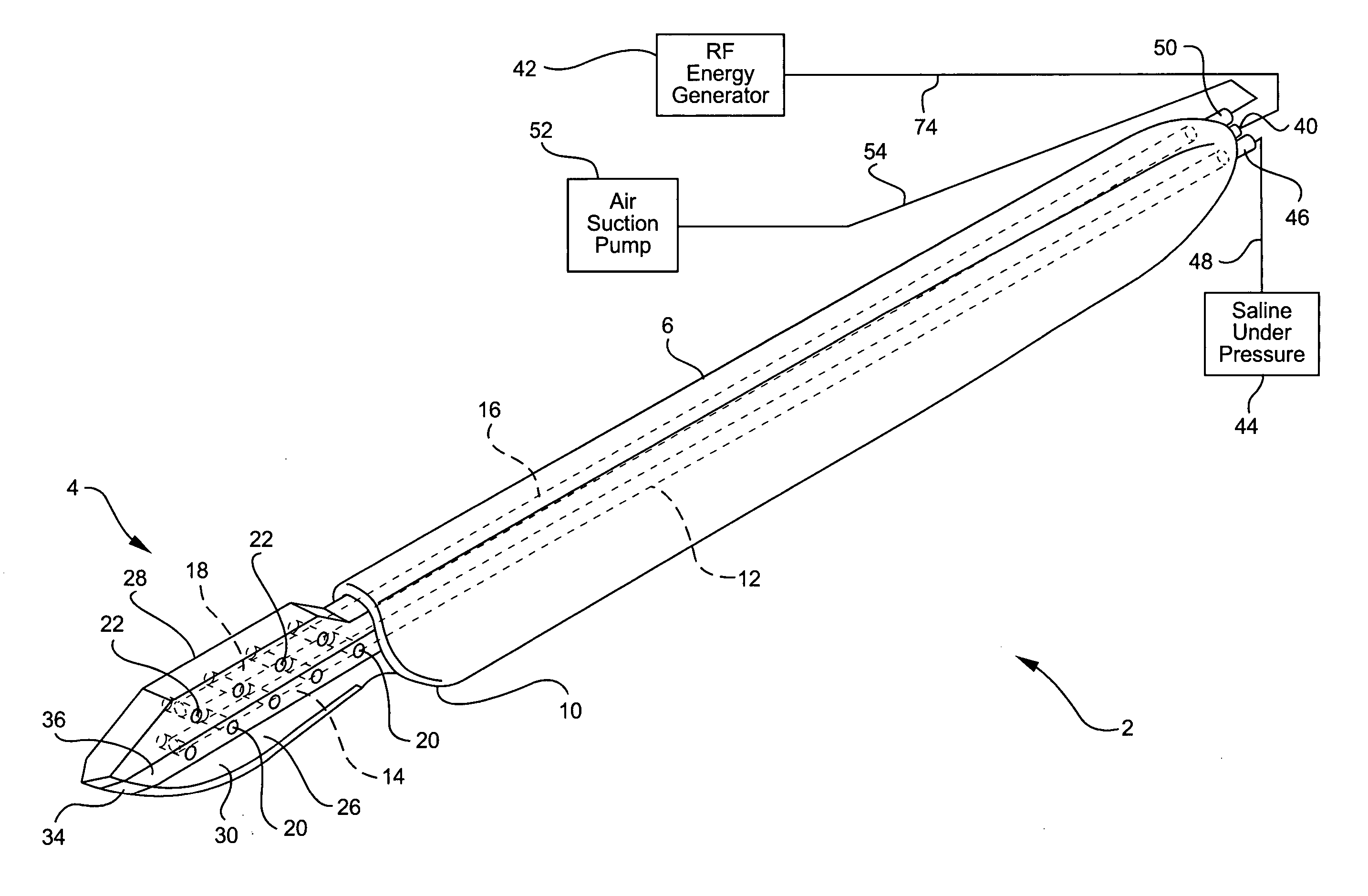Surgical cutting and tissue vaporizing instrument
- Summary
- Abstract
- Description
- Claims
- Application Information
AI Technical Summary
Benefits of technology
Problems solved by technology
Method used
Image
Examples
Embodiment Construction
[0033] An electrosurgical scalpel 2 formed in accordance with one form of the present invention is illustrated by FIGS. 1-4 of the drawings. One of the advantages of the electrosurgical scalpel 2 is that it has the ability to direct saline or another electrolyte to the targeted site for tissue transection and simultaneous vaporization, as well as having the capability of removing saline or other electrolyte from the targeted area if too much of this liquid is provided. This feature advantageously allows the electrosurgical scalpel 2 to be used in dry fields by directing, and removing, saline to and from the targeted area, which further minimizes tissue sticking to the scalpel during transection.
[0034] As shown in FIGS. 1-5 of the drawings, an electrosurgical scalpel 2 formed in accordance with one form of the present invention includes a blade portion 4 and a handle portion 6. The blade portion 4 is mounted on the handle portion 6.
[0035] The handle portion 6 has a generally elonga...
PUM
 Login to View More
Login to View More Abstract
Description
Claims
Application Information
 Login to View More
Login to View More - R&D
- Intellectual Property
- Life Sciences
- Materials
- Tech Scout
- Unparalleled Data Quality
- Higher Quality Content
- 60% Fewer Hallucinations
Browse by: Latest US Patents, China's latest patents, Technical Efficacy Thesaurus, Application Domain, Technology Topic, Popular Technical Reports.
© 2025 PatSnap. All rights reserved.Legal|Privacy policy|Modern Slavery Act Transparency Statement|Sitemap|About US| Contact US: help@patsnap.com



